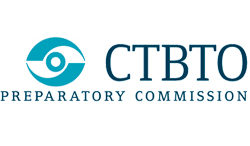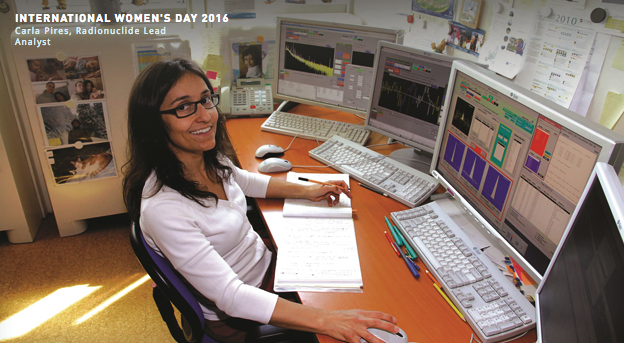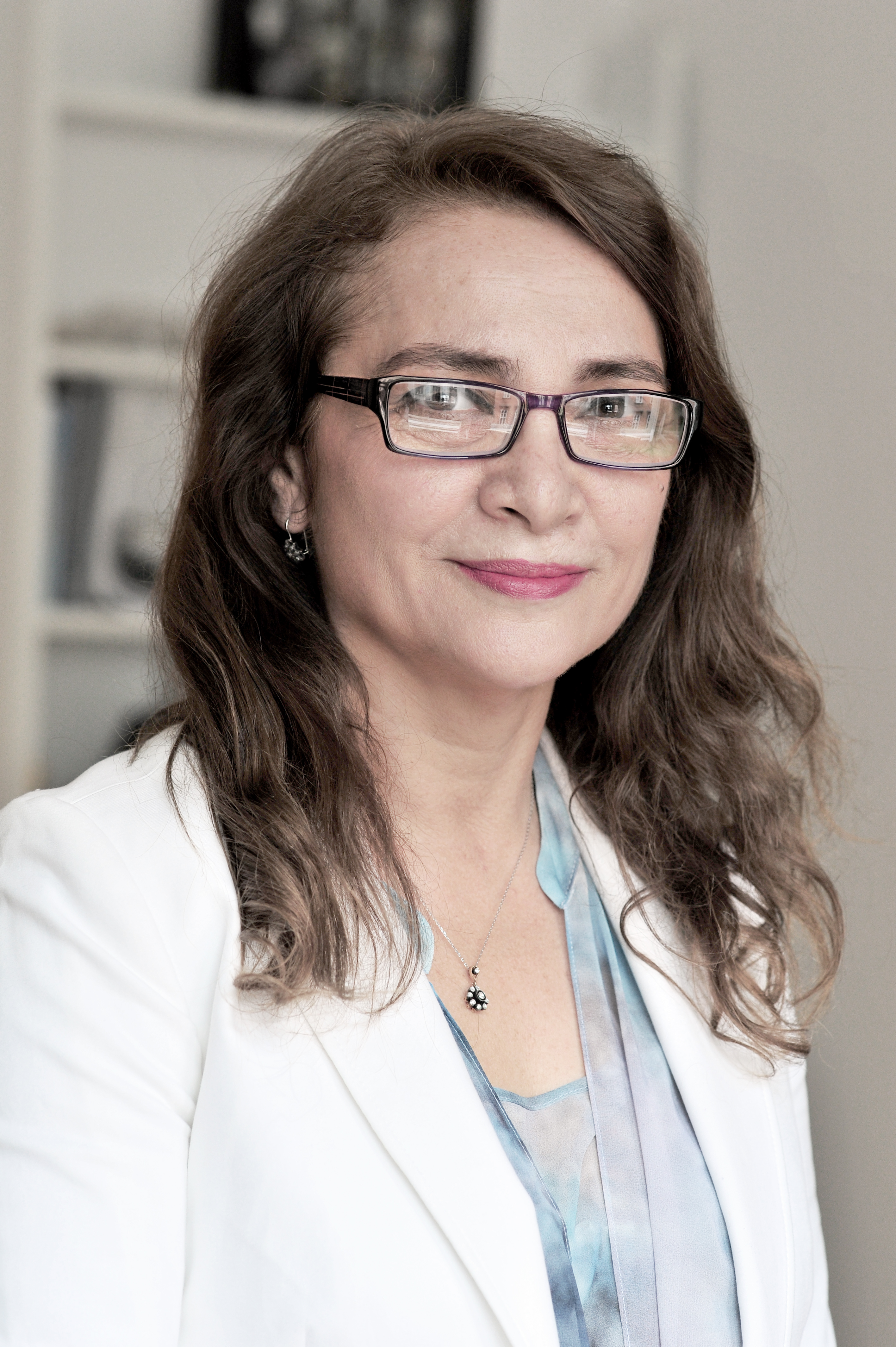This website uses cookies so that we can provide you with the best user experience possible. Cookie information is stored in your browser and performs functions such as recognising you when you return to our website and helping our team to understand which sections of the website you find most interesting and useful.

What is the CTBT?
The Comprehensive Nuclear-Test-Ban Treaty (CTBT) bans nuclear explosions by everyone, everywhere: on the Earth’s surface, in the atmosphere, underwater and underground.
Why is the CTBT important?
It makes it very difficult for countries to develop nuclear bombs for the first time, or for countries that already have them, to make more powerful bombs. It also prevents the huge damage caused by radioactivity from nuclear explosions to humans, animals and plants.
Many attempts were made during the Cold War to negotiate a comprehensive test ban, but it was only in the 1990s that the Treaty became a reality. The CTBT was negotiated in Geneva between 1994 and 1996.
Headquarters in Vienna
Since the Treaty is not yet in force, the organization is called the Preparatory Commission for the Comprehensive Nuclear-Test-Ban Organization (CTBTO). It was founded in 1996, has over 260 staff from over 70 countries, and is based in Vienna. The CTBTO’s main tasks are the promotion of the Treaty and the build-up of the verification regime so that it is operational when the Treaty enters into force.

The Provisional Technical Secretariat (PTS)
The PTS started its work in Vienna on 17 March 1997. The main function of the PTS is to assist the Preparatory Commission in the establishment of a global verification regime to monitor compliance with the comprehensive ban on explosive nuclear testing. Another PTS function is to promote the signing and ratification of the Treaty so that it enters into force as soon as possible. The PTS staff is multinational in composition. However, only nationals of Signatory States are eligible to serve in the PTS.
Join us to put an end to nuclear explosions
The Organization considers its staff and their expertise to be its most important resource. The CTBTO provides exciting employment opportunities in a richly diverse work environment for high calibre candidates with scientific and technical qualifications, as well as for those with management and non-technical skills. The Organization prioritizes and promotes the highest standards of professional competence, experience and integrity.
CTBTO is committed to diversity and inclusion within its workforce and encourages qualified female and male candidates from all national, religious and ethnic backgrounds, including persons living with disabilities, to apply to become a part of our Organization.
For a step-by-step guide on how to apply to CTBTO vacancies, to learn more about the employment opportunities at the CTBTO and the recruitment process, please click HERE.
The CTBTO supports fair gender distribution in the organization and aims to increase the number of women at the professional level, especially in the scientific and technical categories. The CTBTO has thus introduced various measures, including giving preference to well-qualified women candidates in the recruitment process, to ensure that in cases of equal qualifications and suitability, women are chosen over men. All vacancy announcements clearly state this. Measures have also been taken to reach out to more well-qualified female applicants through States Signatories. The CTBTO has involved States themselves to assist in targeting promising female candidates.
 There are ever more incentives for well-qualified women aspiring to work at the CTBTO. One of them is the host city of Vienna, which is known to be both safe and entertaining, abounding with a high level of culture and natural beauty. Secondly, the CTBTO’s offices are located at the Vienna International Centre and supported by an environment that aims to be family-friendly
There are ever more incentives for well-qualified women aspiring to work at the CTBTO. One of them is the host city of Vienna, which is known to be both safe and entertaining, abounding with a high level of culture and natural beauty. Secondly, the CTBTO’s offices are located at the Vienna International Centre and supported by an environment that aims to be family-friendly
CTBTO Executive Secretary Lassina Zerbo highlighted women’s contribution to the nuclear test-ban: “Women were and are the driving force behind the ban on nuclear testing. The civil society movements that pushed for the Comprehensive Nuclear-Test Ban Treaty (CTBT) in 1996 and its predecessors were to a large extent grounded in women’s initiatives.
“I am particularly proud of the women working at the Comprehensive Nuclear-Test-Ban Treaty Organization (CTBTO). They brave the elements in the world’s remotest corners t
o build and maintain our monitoring stations, they work long hours to screen vast amounts of data for suspicious events, and they develop new methods of analysis and management practices. My sincere appreciation and thanks go to all of them, for without them we could not have become what we are today: the world’s centre of verification excellence.” – CTBTO Executive Secretary Lassina Zerbo

The Preparatory Commission for the Comprehensive Nuclear-Test-Ban Treaty Organization (CTBTO) is an international organization located in Vienna, Austria. Its main task is to establish a global verification regime to monitor compliance with the Comprehensive Nuclear-Test-Ban Treaty (CTBT), which bans all nuclear explosions. The verification regime includes a global network of 337 monitoring facilities, using four different technologies (seismic, hydroacoustic, infrasound and radionuclide), a communications infrastructure, an international data centre, and the capability to carry out on-site inspections.
The CTBTO provides exciting employment opportunities in a highly diverse and rich, multicultural work environment. The CTBTO looks for candidates with high calibre scientific and technical skills, as well as management and non-technical skills. The paramount consideration in the recruitment, employment and promotion of staff is securing the highest standards of professional expertise, experience, efficiency, competence and integrity.
CTBTO staff members enjoy an annual net base salary free of taxation, medical insurance coverage valid worldwide, and participation in the CTBTO’s Provident Fund. Additional benefits include, where applicable, a settling-in grant, dependency allowance, education grant for children, rental subsidy, six weeks’ vacation per year and home leave travel every two years. Assistance is provided to staff members when relocating to Vienna in finding accommodation and schools. Where applicable, the CTBTO covers the cost of removal of personal effects.
Nurcan Meral Özel is Director of the International Monitoring System (IMS) Division at the CTBTO in Vienna since November 2014.
Prof. Özel is a Turkish national who completed her higher education in Turkey and Japan, obtaining a Ph.D. degree in Seismology from Hokkaido University Science Faculty, Japan, in 1995.
She was Vice-Director of the Bogazici University-Kandilli Observatory and Earthquake Research Institute (BU-KOERI) in Istanbul, Turkey, where she was responsible for all seismological operations at the KOERI, which hosts the 24/7 National Earthquake Monitoring Centre and Istanbul Earthquake Early Warning and Rapid Response System.

She served as the Director of the Turkish National Data Centre (BU-KOERI/ Belbasi Nuclear Test Monitoring Center) from 2006 to 2014 and during this time was also the Turkish Delegate to the CTBTO’s Working Group B and the Head of the Geophysics Department at BU-KOERI. She was also the first Turkish seismologist at the International Seismological Centre (ISC) in the United Kingdom, where she worked from 2002 to 2004.
Prof. Özel is the founding coordinator of the National Tsunami Warning Center in Turkey (NTWC-TR), operational since 2012, providing services to the Eastern Mediterranean, Aegean and Black Sea under the framework of the Tsunami Warning System in the North-eastern Atlantic, the Mediterranean and connected seas region (UNESCO/IOC/ICG/NEAMTWS).
During her professional career spanning many years, Prof. Özel has developed expertise in earthquake source mechanisms, global seismology, deep and moderate deep earthquakes in subduction zones, strong ground motion, historical earthquakes, seismic array methods of monitoring nuclear tests, tsunami hazard and early warning systems. She has led teams and organizations in developing, implementing and operating advanced systems for earthquake monitoring and has coordinated and participated in many international projects funded by the European Union and the Government of Japan. During her academic career she always made sure to supervise many young students and researchers, sharing and passing on her knowledge.
One of Prof. Özel’s major contributions to her country, was as Coordinator of FP-7 MARsite (New Directions in Seismic Hazard Assessment through Focused Earth Observation in the Marmara Supersite), which brought together more than 80 collaborators in 18 major European research institutions from with a budget of €7.8 million Euro. The MARsite project focused on the monitoring of the Marmara region and the integration of data from land, sea, and space. In the frame of this project, Marmara Region gained the new innovative borehole observation system, pilot seismic landslide monitoring system, several sea floor observation systems and 30 scientific publications. The processing of these composite data based on sound earth-science research proved an effective tool for mitigating damage from future earthquakes. This was achieved by monitoring the earthquake hazard using established seismic techniques for forecast and hazard mapping to make important risk-mitigation decisions regarding building design, insurance rates, land-use planning, and public-policy issues that need to balance safety and economic and social interests. MARSite demonstrated the power of different sensors in the assessment of the earthquake hazard.
As Director of the IMS Division at the CTBTO, Prof. Özel is directly responsible to the Executive Secretary for the installation and certification of the IMS network’s stations, systems and other facilities, as well as the engineering and development of the network and its continuous sustainment.
Interview
On this occasion, we have prepared an interview with a leading female scientist working at the CTBTO, the Director of International Monitoring System Division, Nurcan Meral Özel.
What is your position at the CTBTO?
Nurcan Meral Özel: “Since the global observation infrastructure of the International Monitoring System (IMS) has reached an advanced stage of completion, my main responsibilities as Division Director are leading, planning, coordinating and directing the programme for the completion and sustainment of this extraordinary monitoring system supported by about 63 staff. The IMS has more than 300 stations located around the world, and we continue to install and certify the remaining stations needed to complete the network.
I oversee the establishment and update of IMS technology development plans and the identification of system-wide engineering solutions to improve the operation of IMS facilities. I also provide scientific and engineering advice on matters relating to the establishment and the operation of this major network. To accomplish this part of my job, I need to follow the latest engineering technology developments in sensors, design and communications, and their respective applications to the IMS. Because of my academic background in science and technology, I am particularly excited about development and application of new innovative technology for IMS monitoring stations. I am a seismologist and have also worked on sea floor observation systems, but now I also need to work on radionuclide and infrasound monitoring technology, and I try to follow closely new developments in these fields.
As one of the Organization’s senior managers, I invest time liaising with delegates of States Signatories, Permanent Missions, other organizations, government officials and designated institutions in countries that host IMS facilities in efforts to promote, complete and sustain the network and maintain confidence and support. I assess and interpret policy issues and oversee their implementation, establish procedures and practices to improve effectiveness and efficiency of the Division. In addition, I monitor performance, appraise the achievements of goals set within the Division, and oversee the process of examination of risks and prospects to enhancing coordination, team work, and maximum utilization of all resources allocated to the Division. Of course, to accomplish all of this, I work closely with my staff and colleagues in the other Divisions, as well as with States Signatories to ensure that the IMS network provides effective services as required by the Treaty.
What makes working at the CTBTO fulfilling?
“I enjoy working at the CTBTO first of all because of what it stands for: a nuclear-test-free world that serves the vision of a nuclear-weapon-free world. As a woman, what resonates, in particular, is the contribution to peace and security promised by the entry into force of the Treaty together with a complete and functioning verification system. The CTBTO is the ideal setting to combine knowledge acquired through science and then see it implemented on the ground, covering a vast number of countries, involving different people at all levels and at the same time positively impacting our environment.
At the personal and professional level, I am proud to serve an organization that places special emphasis on gender balance. Achieving gender parity is one of the issues that all CTBT State Signatories agree upon. As an Organization, we are committed to a policy of equal employment opportunity, and we place particular emphasis on improving the representation of women in the professional staff category.
I should also mention the very challenging work completed last year that yielded particularly fulfilling accomplishments. This includes installation and certification of IMS stations on the Galapagos Islands Ecuador, as well as in China and the Russian Federation. A major, complex $35 million project was also successfully completed with the certification of the hydroacoustic station on the Crozet Islands in the southern Indian Ocean. In total eight certified stations were added to the network in 2017. The particulate radionuclide station at Peleduy Russian Federation was also successfully restored after years of outage. I am giving particular attention to enhancing the noble gas monitoring capabilities of the IMS network, and in this regard, noble gas measurement systems were certified at IMS radionuclide laboratories in France and the United Kingdom in 2017. I look forward to continuing exciting developments in 2018.”
What does science mean to you?
“Science makes me feel like a dynamic element of the dynamic world we live in. It is a universal language that enables many people to come together and arrive at solutions or discoveries together. You can also work on a single issue, alone or with a small group and affect the lives of millions in a positive way.”
Do you have any advice to young women wishing to embark on a career in science?
“My message to girls and young women is that they should always remember that science ensures world progress and women have a part to play. My advice to girls studying science would be: do not see yourself and do not let others see you as a female scientist only; see yourself as a scientist!
Be yourself, be factual, be intuitive, and most importantly, be confident. Be the one that pushes the limits, never be discouraged at the first, second, third attempt at achieving what inspires you. As Albert Einstein put it: “In the middle of difficulty lies opportunity.”
Women were and are the driving force behind the ban on nuclear testing. The civil society movements that pushed for the Comprehensive Nuclear-Test-Ban Treaty (CTBT) in 1996 and its predecessors were to a large extent grounded in women’s initiatives. We cannot forget Dr. Louise Reiss, the scientist who helped to convince President John F. Kennedy to conclude the 1963 Partial Test Ban Treaty through her ground-breaking Baby Tooth Study.
Company Statistics
No. of employees
Headquaters
